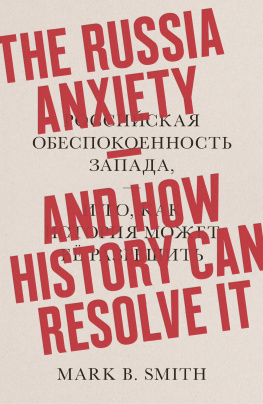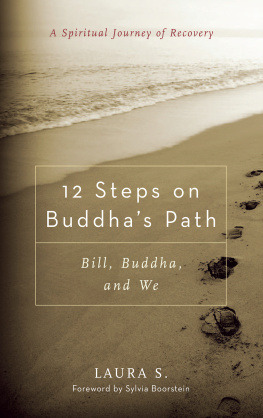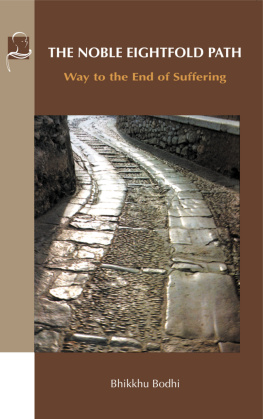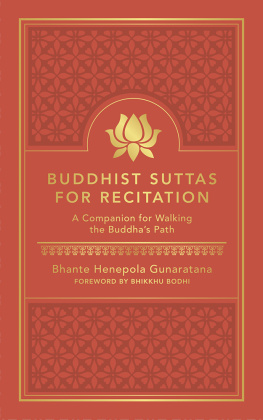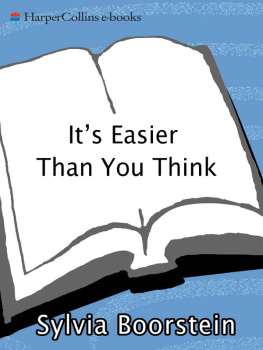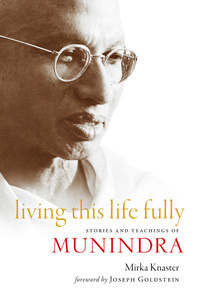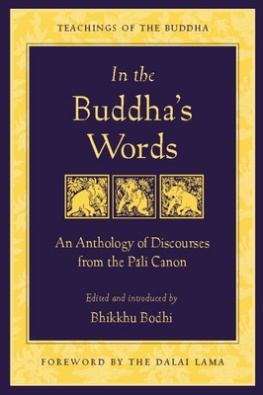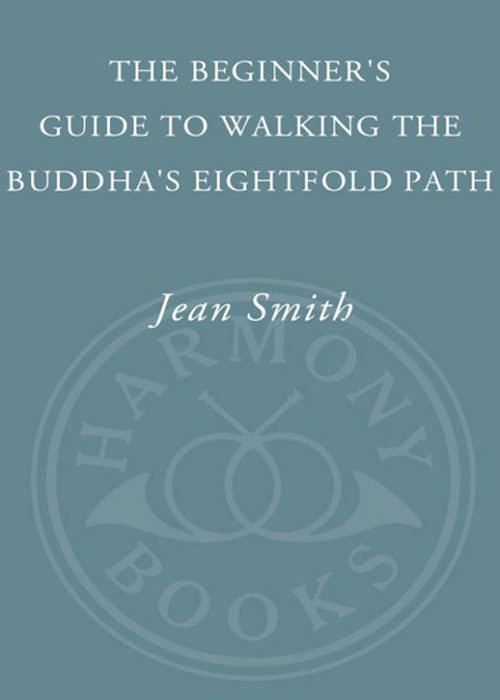
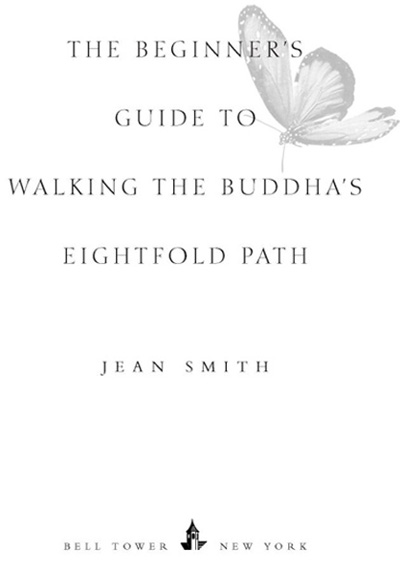
Table of Contents
For all my teachers
Preface
My first Buddhist teacher was an old woman in a small Himalayan village. She was hunched before her loom, sitting on the ground in front of her mud-brick house. As I walked through the village, I greeted her, then lingered to watch her work.
I had become interested in Buddhism in my teens, decades earlier, but everything I read ever since had only been lodged between my ears in a great intellectual conceit. As I looked at the quiet purposefulness of this woman, I realized that she was fully present in the moment, and that she had something I wanted: peace. With that realization, the teachings of Buddhism made the epic eighteen-inch descent from my head to my heart.
I have had many teachers since then, from all traditions in Buddhism and from none: The earth is my teacher. Music is my teacher. My dog is my teacher. And most recently, illness has been my teacher. It is said that our own suffering in life can lead us to a deep spiritual path and that a near encounter with death can be a powerful turning point. It has been for me.
The worlds major spiritual traditions acknowledge that everyone wants to be happy, yet we seem to be imprisoned by a kind of dis-ease we share as part of the human condition. But we can break those bonds. The Buddhas Eightfold Path can lead us to freedom and happiness. May we walk it together.
JEAN SMITH
September 2001 Keene, New York
Introduction to the Eightfold Path
Jetliners used as bombs against innocent people. Ethnic slayings. Political scandals. Athletes using drugs. Exploitation of foreign workers. Destruction of habitats. Kids killing kids. Cheating on income taxes. Not calling your mother. Not answering your child. Why does there seem to be so much suffering in the world?
Our very nature as human beings is to want to be happy. But as we encounter others with the same quest, we often create the opposite of happinessfor them and for ourselves. It sometimes seems as if the harder we try to be happy, the more uneasyif not downright wretchedwe become. It is like drinking salt water in an effort to slake thirst. Nearly 2,600 years ago, the Buddha made this paradoxical phenomenon the core of his teachings, known as the Dharma (in Sanskrit; Dhamma in Pali). In his first teaching, the Four Noble Truths, not only did he describe the nature and causes of such suffering in our life, but he also specifically mapped the path we can follow to end it. On this path, the Eightfold Path, we discover that happiness results from being totally in the present moment, without greed or aversion.
You may be wondering, What does this teaching have to do with me? The first answer we find is that our experience of suffering and its cause is universal. We all seek happiness, but whenever we become attached to things we believe will bring us happiness, suffering eventually arises because those things are impermanent. When some people first encounter this teaching, they assume that Buddhism must be quite gloomybut only if they have never seen the infectious smile of the Dalai Lama, who observed in Compassion and the Individual:
Now, when you recognize that all beings are equal in both their desire for happiness and their right to obtain it, you automatically feel empathy and closeness for them.... Nor is this wish selective; it applies equally to all.
This sense of interconnection with all beingshuman and nonhumanis one of the most satisfying aspects of Buddhist practice. When someone says to you, I know how you feel, and you know they really do, that is one of the most comforting experiences you can have. People who are dealing with traumas resulting from domestic abuse, war, and natural disaster or who are members of twelve-step programs have learned that shared experience is often the most healing and motivational aspect of their recovery. Similarly, Buddhist teachings stress that understanding our commonality with all beings is crucial to our overcoming suffering.
Each chapter of this book discusses one step of the Eightfold Path. In Chapter 1 we shall explore the Buddhas explanation of the universal existence of suffering in the First Noble Truth; discuss the cause of suffering and the converse, its cure, in the Second and Third Noble Truths; and introduce the map for ending suffering, the Fourth Noble Truththe Eightfold Pathin which right understanding and right thought are considered the wisdom teachings; right speech, right action, and right livelihood are the morality teachings; and right effort, right mindfulness, and right concentration are the mental discipline teachings.
All major Buddhist traditions acknowledge the foundation of the Four Noble Truths and the Eightfold Path. This book draws upon the wisdom of these richly diverse traditions, through abundant quotes interspersed throughout, to create one sangha. Although all traditions acknowledge the underpinning of the Four Noble Truths, some stress one group of teachings more than others. For example, Zen Buddhist training emphasizes the mental discipline teachings, with the conviction that morality and wisdom will follow naturally from the practice of deep meditation. Many Tibetan, or Vajrayana, teachers put emphasis on the wisdom teachings, understanding that morality and strong meditation will follow. Vipassana, or Insight Meditation, teachers often underscore the morality teachings as the basis for mindfulness and wisdom.
No tradition excludes any of the steps on the Eightfold Path; all acknowledge that if you have no wisdom and are preoccupied with how you are going to get the better of your friends, youre not likely to have a very peaceful meditation practice. Because all steps are interrelated and so critical, Insight Meditation teacher Sylvia Boorstein refers to them as the Eightfold Circle (see page 16). Each of us as practitioners must explore the Buddhas teachings for ourselves, as the Buddha himself invited us to do. Regarding this inquiry, Thai Vipassana master Achaan Chah teaches that the true Eightfold Path is within us: two eyes, two ears, two nostrils, one tongue, and one body.
There are many excellent books on the Buddhas teachings, both scholarly and practical, and some are listed in Works Cited and Suggested Readings, beginning on page 215. Because this book is devoted to how we can apply these teachings to everyday life, we shall mention, but not discuss in detail, several important topics: enlightenment, nirvana, and rebirth. But let us briefly address them here as background.
Enlightenment is our awakening to the true nature of reality, including our own, thus freeing ourselves of delusion and of the sense of a separate self. For the purposes of our practice, it is noteworthy that after the Buddhas enlightenment, he continued to practice for the rest of his life. We too, no matter what our large or small enlightenment experiences may be, nevertheless must practice in our daily lives. Enlightenment is not necessarily a permanent condition. Once Enkyo OHara, resident teacher of the Village Zendo in New York City, was asked by some visitors if she was enlightened. She replied, with the wit typical of Zen teachers: Not at the moment.
Nirvana (in Sanskrit; nibbana in Pali) literally means blown out or extinguished and refers to liberation through enlightenment from the grasping or clinging that is the source of all suffering and to the rooting out of greed, hatred, and delusion. The Buddha was less specific about nirvana than about many other teachings. What is important for us to realize is that, contrary to popular usage and advertising, it is not a place we go
Next page






